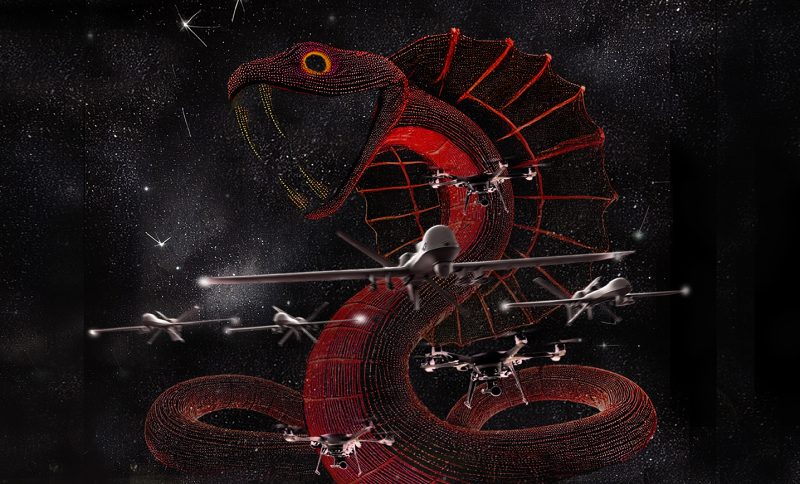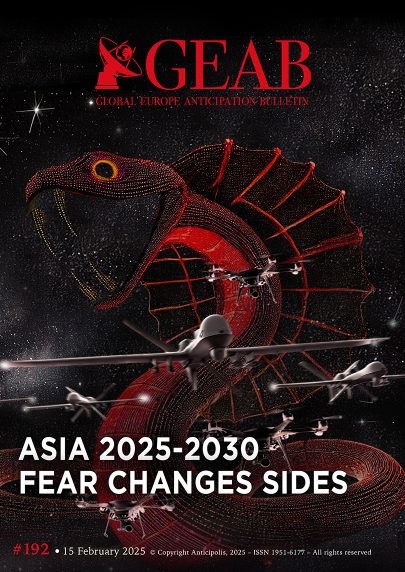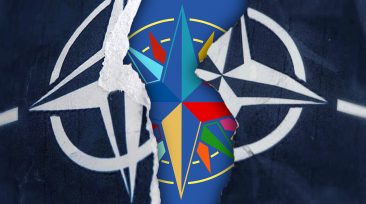GEAB 192

While Europeans have their eyes firmly fixed on the headlights of the Trump-Musk duo, China, Vietnam, South Korea, Singapore, Indonesia and Malaysia have just celebrated the start of the Year of the Snake.
Sealing in the violence of the preceding Dragon, the Snake symbolises moulting, growth, flexibility, long-term thinking and wisdom. These symbols resonate very well with a quarter of the world’s population: 1.4 billion Chinese, 277 million Indonesians, 100 million Vietnamese, 50 million South Koreans, 35 million Malaysians, 40 million members of the Chinese diaspora…
Meanwhile, the West is depressed, frightened and angry…
Yet Asian horizons are not so blue, nor are Western prospects entirely bleak. The new occupant of the White House, an acclaimed reformer of a system on its last legs, is a sign that change is on the cards, as is the discontent of European nations and businesses, who are struggling to endure the prolonged Russo-Ukrainian war, eagerly awaiting its conclusion so they can bid farewell to a European Commission that has failed to deliver on peace, prosperity, democracy and environmental sustainability.
But the West is afraid of the future – and not just recently – and rightly so: how can it hope to live better in a world where it is no longer the centre?
And yet, it would undoubtedly be enough to listen more carefully to the heartbeat of the East, welcoming a future it desires and has the power to improve technologies, development, the environment, education, health… everything needs to be built there, and rebuilt here. Powerful tools are available to all, and the challenges are clearly on the table. Could Asian optimism inspire us? And could our military drones also be transformed into celestial and colourful spectacles?
Asia (the Asians) is adapting Western technologies, originally developed by military-industrial complexes and integrating them directly into its infrastructures and societal frameworks, this may be because the networked nature of these technologies – emphasising fluidity, circularity, resilience, and public service—resonates deeply with Asian values and systems. In contrast, the West often leans towards rigidity, linearity, force, and finance, which may explain why these technologies find a more natural home in the East.
With DeepSeek, China has come to remind us of the principles of free access, disintermediation, and democratisation that the West itself set out at the start of the Internet revolution – and even before[1] – and that its political and economic model for funding innovation has failed to respect.
Instead of this hope, the reign of a handful exclusively American technology giants has emerged, becoming cankers for all our societies. In the name of the sacrosanct US-China competition, they have prospered unchecked. But today, DeepSeek has reminded us that innovation and concentration are not natural allies, unlike innovation and diversity.
This victory – a one-off, no doubt, but a resounding one nonetheless (some refer to it as a ‘Sputnik moment’[2]) – of the collectivist-communitarian model over individualist-capitalism marks a great start to the Year of the Snake.
Perhaps this is even whispering in our ear that the technological revolution of the 90s, born from the vision of a united Europe, was co-opted by the Americans, with vast resources and strategic communication, they imposed it on the world, aiming to enrich themselves and maintain global dominance. Yet, in the end, it is the Asians who are integrating these technologies into their social structures in the most natural and seamless way.
This issue of the GEAB focuses on Asia (the Asians) and at its heart ASEAN, which, in so many ways, resembles our crisis-ridden EU, yet its path is increasingly diverging from ours. The question we aim to explore is this: Is the European crisis a glimpse into ASEAN’s or Asia’s future? Or, conversely, could Asia’s hope become Europe’s?
What do you think? We’d love to hear your thoughts— please take our survey !
***
Next GEAB Book Club meeting: 6 March from 6pm (language: FR-EN)
Register here to receive the connection link
____________
[1] Source: OpenSource explained, Outsystems
[2] Source: The New Yorker, 03/02/2025

The transformation of the global landscape is no longer simply a matter of Chinese technological or economic dominance. We are witnessing the emergence of a new world order structured by [...]
The fundamental principles of the Internet in 1995 included free access and technological democratisation. For the most part, the information highways launched at the time seemed to be offered to [...]
Until now, it has been a question of preventing China from overtaking the United States in terms of technology. In 2025, not only will the West realise that China has [...]
At the start of this issue, we put forward the following hypothesis: Asia may be developing at breakneck speed, but it is ultimately following the same economic model of the [...]
The BRICS' difficulties in building a suitably influential financial system can be explained by their internal divisions. In 2026, we expect Asia to take over and lay the foundations for [...]
2025: Western Sahara, the new investment hotspot! We believe that the Morocco-Algerian disagreement over the Western Sahara will come to an end by 2025. Progress has been slow but steady. [...]



Comments